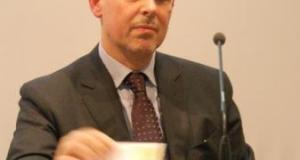
News
RICEVIMENTO
1° semestre:
mercoledì ore 16:00-17:00; giovedì ore 12:00-13:00.
2° semestre:
giovedì ore 16:00-17:00
Dipartimento SARAS – Sezione Storia dell’Arte, stanza 20.
CORSI DEL 1° SEMESTRE
STORIA DELL’ARTE BIZANTINA IA
LT, 2° ANNO, 6 CFU
INTRODUZIONE ALL’ARTE BIZANTINA
ORARIO DELLE LEZIONI:
Martedì, ore 16:00-18:00, Aula I Venturi
Giovedì, ore 10:00-12:00, Aula V
INIZIO DELLE LEZIONI: martedì 1 ottobre 2024.
STORIA DELL’ARTE BIZANTINA
LM, 2° ANNO, 6 CFU
SANTA SOFIA DI COSTANTINOPOLI DA COSTANTINO A KEMAL ATATÜRK
ORARIO DELLE LEZIONI:
Martedì, ore 10:00-12:00, Aula Romeo
Mercoledì, ore 14:00-16:00, Aula Romeo.
INIZIO DELLE LEZIONI: martedì 1 ottobre 2024.
CORSO DEL 2° SEMESTRE
STORIA DELL’ARTE BIZANTINA II
LT, 3° ANNO, 6 CFU
TESSALONICA BIZANTINA
ORARIO DELLE LEZIONI:
Martedì, ore 10:00-12:00, Aula "Carlotta Nobile", Dip. SARAS, Sezione Storia dell'Arte, piano I.
Giovedì, ore 14:00-16:00, Aula "Pietro Toesca", Dip. SARAS, Sezione Storia dell'Arte, piano I.
INIZIO DELLE LEZIONI:
Giovedì 27 febbraio 2025.
